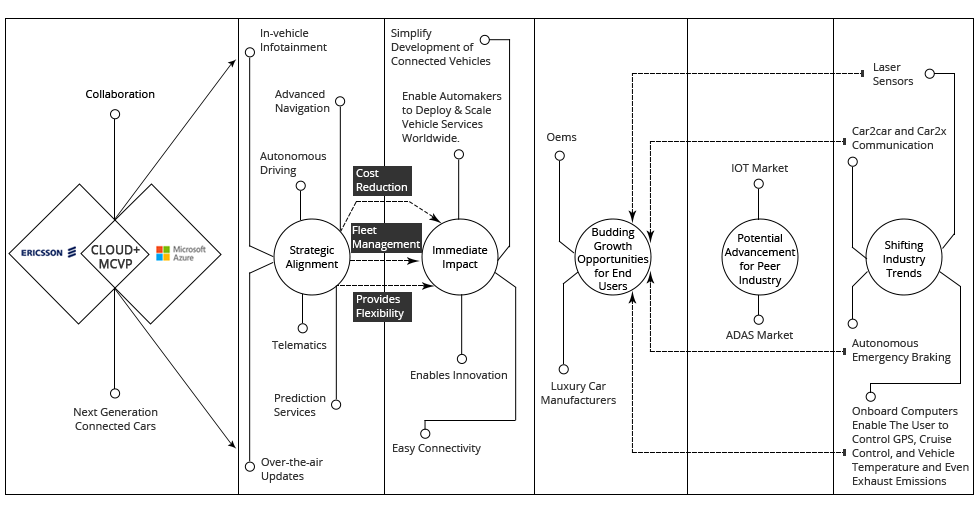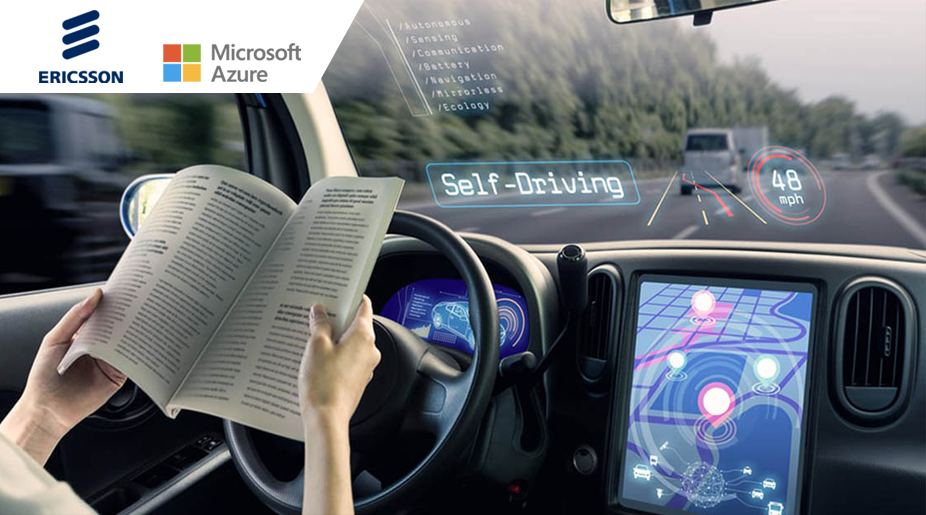Ericsson, Microsoft: Next-Gen Connected Cars Collaboration
In the industry news, we showcase our analytical viewpoint on collaboration in the automotive and technology space, which aligns with its future growth initiatives. We entail a holistic impact across the organization, its end-users, and peer industry participants. Furthermore, we will also represent the shifting trends across the industry ecosystem.
Strategic Development
One of the leading providers of Information and Communication Technology (ICT), Ericsson, and the MNC, Microsoft, are bringing together their expertise in the connected vehicle sector. Ericsson is trying to build its connected vehicle cloud on the Microsoft Connected Vehicle Platform running on the Microsoft Azure cloud platform. This new collaborated solution helps automakers develop global vehicle services like fleet management and over-the-air software updates in a much simpler and faster manner. It also reduces the cost. The modular design and multiple deployment options help in providing flexibility.

Strategic Alignment
Ericsson has designed its connected car platform to accommodate the growing demand by manufacturers for scalability, flexibility, and capacity for supporting any related vehicle service. The Microsoft Connected Vehicle Platform (MCVP) helps increase the delivery of a safe, comfortable, and personalized driving experience. It combines multiple parameters like cloud infrastructure, edge technology, and AI and IoT services. The MCVP offers a cloud-connected platform across all digital scenarios to build customer-facing solutions with its help. These solutions include- in-vehicle infotainment, advanced navigation, autonomous driving, telematics and prediction services, and over-the-air updates. MCVP also includes other parameters like the hyper-scale, global availability, and regulatory compliance with Microsoft Azure.
Immediate Impact
Both Ericsson and Microsoft intend to make the development process of connected vehicle services easier to help car manufacturers in a way that they can focus on the need of their customers and can deliver them the new connected driving experiences at the earliest. This new partnership of both these companies brings along great benefits it for the automotive industry. It takes advantage of the leadership in the technology of both the companies in cloud and connectivity. This partnership provides reduced complexity, enables innovations, and helps the automotive industry by making connectivity easier.
Budding Growth Opportunities for End-Users
The partnership between Ericsson and Microsoft will provide a comprehensive and connected vehicle platform. This integration of solutions from both these platforms will help car manufacturers increase their globally connected vehicle solutions. Along with it, it also offers a better vehicle experience for drivers and passengers. The unit that will be greatly benefit by this partnership is the vehicle OEM. It enables automotive manufacturers to redefine vehicle and network edge and make the connected vehicles simpler by reducing the complexity. When combining their strength, these two large organizations can set the standard and transform the automotive industry we know today by taking it to a new level and supporting new business models.
Potential Advancements for Peer Markets
Today, a completely connected car platform on the market is none other than a connected vehicle cloud(CVC). Therefore, the frontline producers of automotive IoT using it to connect 4.5 million vehicles and counting across more than 130 countries. The development of connected cars will increase the demand for the IoT market. It will increase the demand for automobiles equipped with this technology, and hence there is a scope for car makers around the globe to make similar advancements.
Shifting Industry Trends
The car industry has always been one of the most receptive industries to emerging technologies from the previous times. Nowadays, there is no need to take direct control of driving because of increased user interactivity. The users can handover the authority to an onboard navigation system. This fact alone assures that future cars will be autonomous and will be able to interact. The most significant change already taken place in the automotive industry due to technology is that of autonomy. Thus, the automotive manufacturers are developing and producing autonomous self-driving cars on a large scale. Nowadays, mostly, modern cars possess features like Autonomous Emergency Braking (AEB). These systems use radar, cameras, and lidar technology to assess the road ahead and rule out potential collisions. The design of these systems informs the driver, and he takes the necessary action to avoid a future clash, and then if he doesn’t take any action, AEB will brake on behalf of the driver.
Similarly, Google cars feature another autonomous system. It makes use of a road-user interpretive software that has been programmed to interpret the expected road behavior of other drivers. Shape and motion descriptors help the CPU of the car make intelligent decisions in response to other drivers’ movements or pedestal on the road. Laser sensors are also used for the same purpose.
Mostly all cars today have an onboard computer installed. Through many onboard computers, the user can control GPS, cruise, vehicle temperature, and exhaust emissions. The user activity has increased. Today, drivers can give a destination as input into their onboard GPS and run onboard diagnostics to identify any vehicle subsystems’ problems.
Now comes the latest and the most in-demand feature in the automotive industry, i.e., connectivity. This requirement of this feature motivates the automakers to develop connected cars. Connected cars refer to V2V and V2X communications. In simple terms, it is the networking between two vehicles or between vehicle and infrastructure (V2I), like traffic lights. Also, it is the networking of drivers and passengers to the outside world. In the future, they will be able to communicate, work, surf the internet, or access multimedia services during the journey.

